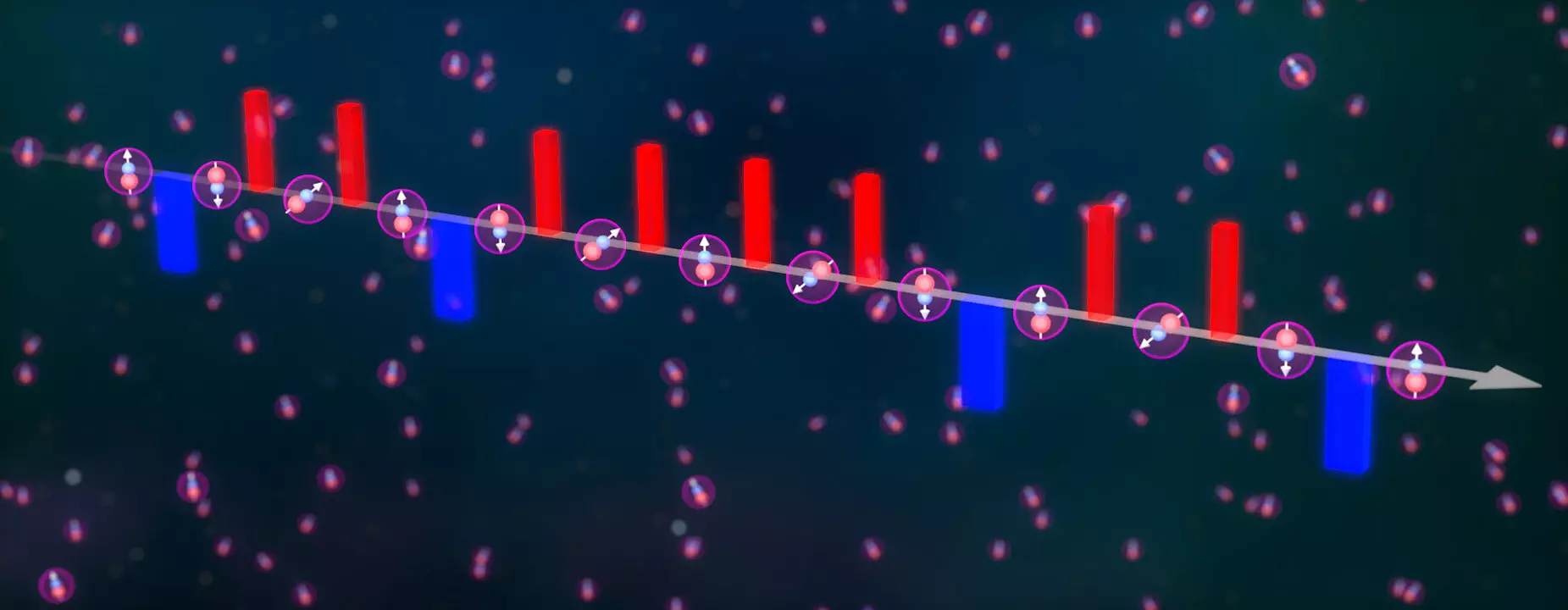At the heart of quantum mechanics lies the behavior of quantum spins, which are fundamental to our understanding of various natural phenomena, such as superconductivity and magnetism. These intricate interactions are essential for manipulating quantum information. Despite their importance, experimental physicists have long faced challenges in creating controllable systems that can effectively mimic and study these interactions in laboratory settings. A recent groundbreaking study published in *Nature*, led by Professor Jun Ye and team at JILA and the National Institute of Standards and Technology (NIST), in collaboration with Harvard University’s Mikhail Lukin, has made strides in this area through innovative techniques in Floquet engineering.
The research team utilized a method called Floquet engineering, which employs periodic microwave pulses to finely tune the interactions between ultracold potassium-rubidium molecules. This innovative approach enables scientists to navigate the complex landscape of quantum many-body systems, making it possible to explore phenomena that were previously difficult to replicate in the lab. By controlling the interactions between these polar molecules—key players in quantum simulations—researchers are laying the groundwork for unlocking new avenues in quantum physics and enhancing our understanding of interactions that underpin magnetic systems.
A notable outcome from the experiments was the observation of two-axis twisting dynamics, an essential phenomenon for generating entangled states. These entangled states have significant implications for quantum sensing, where increased sensitivity to physical effects can provide insights into new physics. As noted by JILA graduate student and lead author, Calder Miller, these states can be engineered to attain heightened sensitivity, opening doors to advances in quantum measurement techniques.
At its core, Floquet engineering acts similarly to a “quantum strobe light,” a metaphor that meticulously explains how adjusting periodic pulses can create various quantum effects. Just as a strobe light can manipulate visual perception—altering motion, creating stillness, or generating a variety of visual scenarios—this technique gives physicists the ability to modulate how quantum particles interact with one another. With an advanced arbitrary waveform generator developed through collaboration with an electronics shop, the researchers achieved unprecedented control over the number and quality of periodic pulses applied to the molecules, a significant leap in quantum experimentation.
Before leveraging Floquet engineering, the scientists encoded quantum information into the two lowest rotational states of the potassium-rubidium molecules. This initial step established the necessary framework for examining how to selectively tweak the interactions between quantum spins, employing models known as XXZ and XYZ spin models.
To help visualize the mechanics of the quantum spins, the researchers likened the molecules to dancers navigating an intricate choreography. Just as dancers adjust their movements in response to their partners, quantum spins alter their interactions based on neighboring particles. In this context, a type of interaction may correspond to the spins exerting a pulling or pushing force on each other, thereby changing their orientation. By employing Floquet engineering, the researchers were able to influence this dance, confirming that the periodic microwave pulses induced changes in the molecular interactions analogous to those produced by electric fields.
What sets this study apart is its demonstration of asymmetric interactions through careful control of pulse sequences. The findings revealed that the team was able to engineer dynamics that go beyond what traditional electric field methodologies can achieve, leading to richer insights into quantum mechanics.
Two-axis twisting represents a critical advancement in the field, allowing the researchers to create highly entangled states essential for advanced sensing applications. As quantum systems operate with complex uncertainties, two-axis twisting aids in reducing uncertainty in one spin component while increasing it in another. This delicate balance enhances sensitivity in experimental applications, particularly in spectroscopy. Miller’s excitement at seeing the early indicators of this dynamic highlights the potential of their experimental achievements.
Though the foundational concept of two-axis twisting emerged in the early 1990s, tangible advancements have only recently come to fruition. The researchers acknowledge that while their current work did not emphasize the detection of entangled states, future efforts will focus on verifying entanglement within their system.
In summation, the advances made by Jun Ye’s team concerning Floquet engineering and its application to ultracold potassium-rubidium molecules present a promising leap forward in quantum physics. By understanding and manipulating the interactions of quantum spins, they contribute significantly to the broader pursuit of quantum technologies. The ability to generate entangled states opens up exciting possibilities for future applications in quantum computing, sensing, and beyond. As researchers continue to unravel the complexities of quantum mechanics, the implications for material science, information technology, and fundamental physics only stand to grow.

